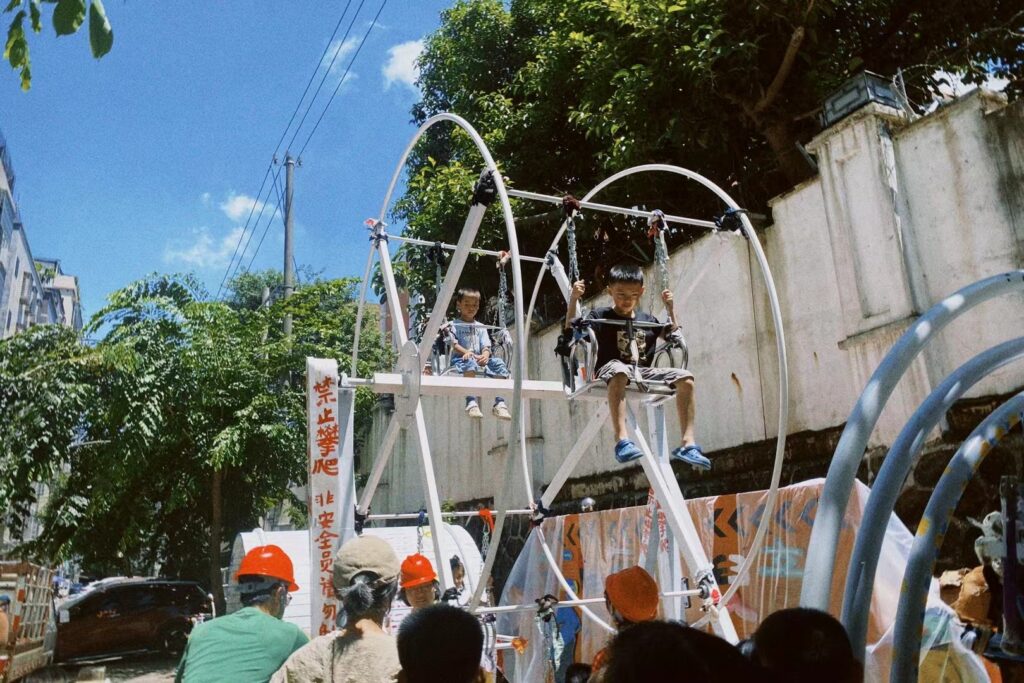

In our gravity-powered playground project, the seesaw-driven Ferris wheel has garnered a lot of attention, with many friends curious about its underlying principle.
We’ve created a model of this device using ice cream sticks.
Ferris wheels and seesaws were some of our favorite things when we were kids, and maybe they still are – whenever we see them, we just want to play.
As a child, I was endlessly entertained by trying out one seesaw after another with my friends. My favorite was the kind with a tire underneath, giving a springy bounce when it came down. I loved the feeling of working together with my friends, trying our hardest to lift each other high into the air. Although we sometimes argued over the seesaw, it remained one of my favorite childhood games. Even now, I often play on seesaws with Melon.
During my teenage years, our school was abuzz with many legends about Ferris wheels. For example, there was a belief that couples who kissed at the highest point of the Ferris wheel would stay together forever, and those who didn’t would break up. Many of our notebooks featured drawings of Ferris wheels, and they were a popular sticker choice. I also remember how, in elementary school, it was popular for girls to take photo booth pictures with Ferris wheel backgrounds. The tall, round Ferris wheel held so many dreams and emotions for us.
In our research, we discovered that the children at No Walls Kindergarten in Haikou are also very fond of these two things.
We aim to build a playground without walls – one that’s easy to assemble and disassemble. Essentially, it’s a set of super-sized building blocks that can quickly set up a playground anywhere.
This means we can’t use electricity; we should rely mainly on gravity and wind power. So, a seesaw-powered Ferris wheel is a perfect match. The seesaw’s up-and-down motion drives the Ferris wheel, creating a space for interaction and cooperation, a high level of playfulness, and maybe a bit of a physics lesson.
With these ideas in mind, we designed this device.





